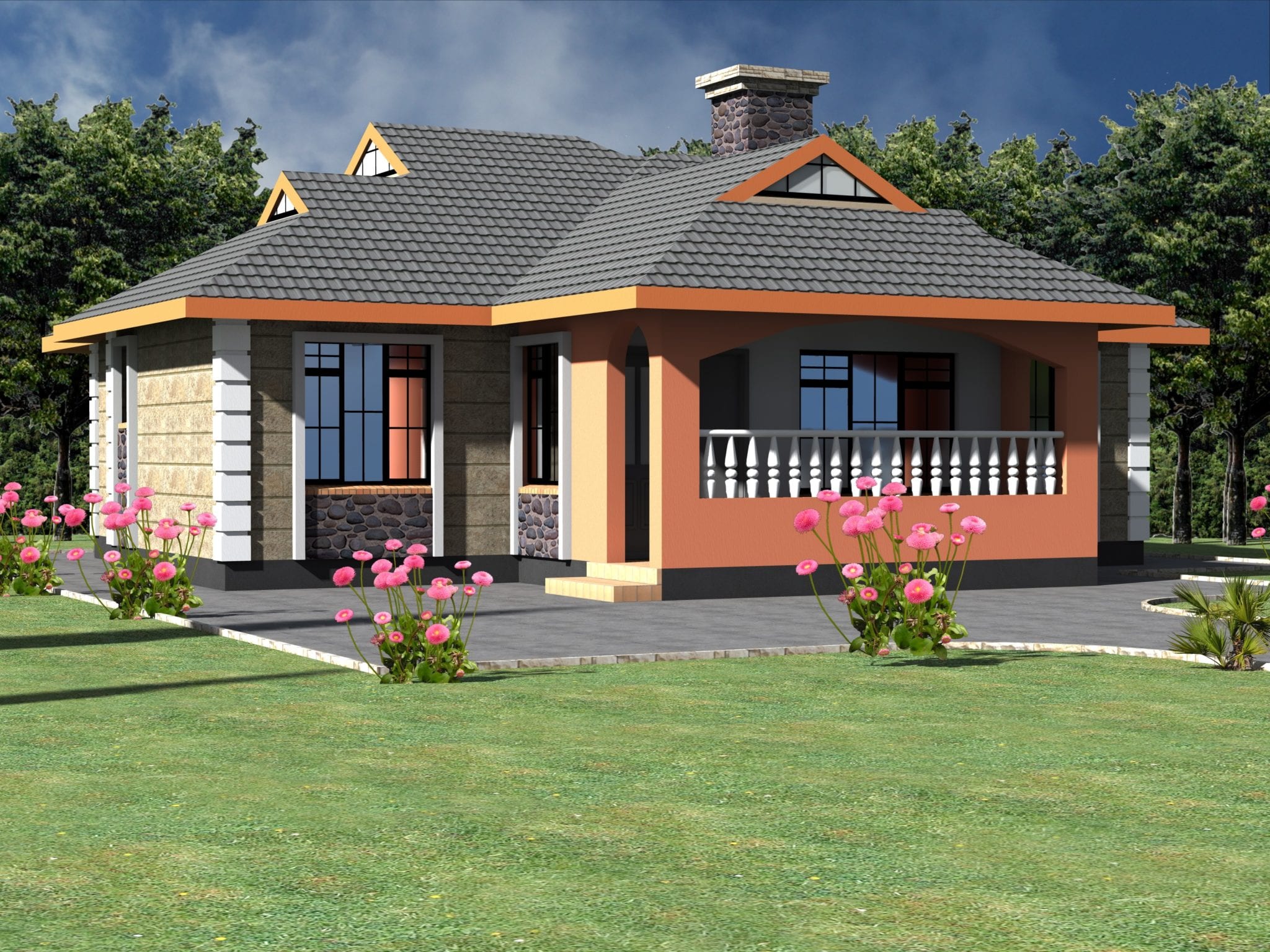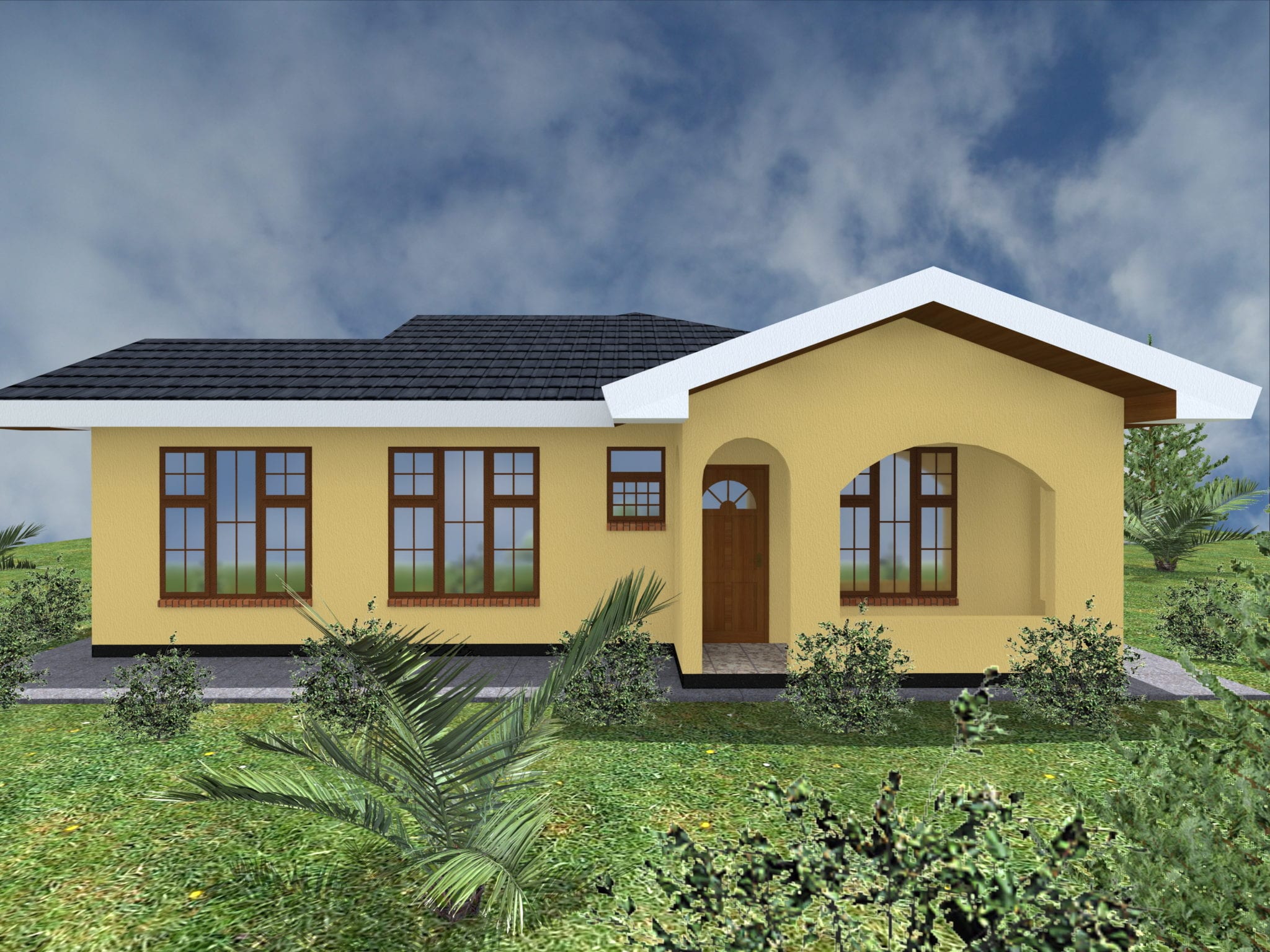Essential Features of a Three-Bedroom House Plan

A well-designed three-bedroom house plan in Kenya should prioritize functionality, space utilization, and aesthetics to cater to the needs of a typical Kenyan family. This section explores the most desirable features, providing insights into creating a comfortable and practical living space.
Functionality and Space Utilization
Functionality and space utilization are crucial in designing a three-bedroom house plan in Kenya. This section provides a detailed checklist of essential features to consider:
- Living Room: The living room should be spacious enough for comfortable seating and entertainment, ideally with a minimum area of 15 square meters. Consider incorporating a dedicated space for a television and entertainment system, as well as adequate natural light. In Kenyan homes, the living room often serves as a gathering space for family and guests, so ample seating is essential.
- Dining Room: A separate dining room is desirable for a three-bedroom house, providing a dedicated space for meals and family gatherings. A minimum area of 10 square meters is recommended to accommodate a dining table and chairs comfortably.
- Kitchen: A well-designed kitchen should be functional and efficient, with adequate counter space, storage, and appliances. A minimum area of 12 square meters is recommended, ensuring ample room for food preparation and cooking. Consider incorporating a pantry or utility room for additional storage.
- Bedrooms: Each bedroom should be comfortable and private, with a minimum area of 10 square meters for the master bedroom and 8 square meters for the other bedrooms. The master bedroom should include a built-in wardrobe and space for a dressing table. Consider providing an en-suite bathroom for the master bedroom for added privacy and convenience.
- Bathrooms: A minimum of two bathrooms is recommended for a three-bedroom house, one for the master bedroom and a shared bathroom for the other bedrooms. Each bathroom should be equipped with a toilet, shower, and sink. Consider incorporating a bathtub in the master bathroom for added luxury.
- Storage: Adequate storage space is essential for a functional home. Incorporate built-in wardrobes in bedrooms, a pantry in the kitchen, and a linen closet in the bathroom. Consider adding a separate utility room for storage of appliances, cleaning supplies, and other household items.
- Ventilation and Natural Light: Ensure adequate ventilation and natural light throughout the house. This can be achieved by incorporating large windows and doors, strategically positioned to maximize airflow and sunlight. Natural light not only enhances the aesthetic appeal but also promotes a healthy living environment.
Aesthetics and Design Trends
Aesthetic considerations play a vital role in creating a visually appealing and comfortable home. This section explores popular architectural trends and design elements in Kenya:
- Modern Minimalism: This style is characterized by clean lines, simple shapes, and a neutral color palette. It often incorporates natural materials such as wood and stone, creating a sense of warmth and sophistication. This trend is popular in Kenya for its timeless appeal and ability to adapt to various lifestyles.
- Tropical Contemporary: This style blends modern design elements with tropical influences. It features open floor plans, large windows, and natural materials such as bamboo and rattan. The use of vibrant colors and patterns inspired by the Kenyan landscape adds a touch of vibrancy and personality. This style is particularly well-suited to the warm climate of Kenya.
- Sustainable Design: Sustainable design principles are gaining popularity in Kenya, emphasizing energy efficiency, water conservation, and the use of eco-friendly materials. This includes incorporating solar panels for electricity generation, rainwater harvesting systems, and the use of recycled or locally sourced materials. Sustainable design promotes environmental responsibility and cost savings in the long run.
- Open Floor Plans: Open floor plans are becoming increasingly popular in Kenyan homes, creating a sense of spaciousness and flow. This involves minimizing walls and partitions, allowing for seamless transitions between different areas of the house. Open floor plans are ideal for promoting social interaction and creating a sense of connection within the family.
- Outdoor Living Spaces: Outdoor living spaces are becoming increasingly important in Kenyan homes. This could include a patio, balcony, or garden area, providing an extension of the living space and offering a place to relax and entertain. The warm climate of Kenya makes outdoor living a desirable feature, encouraging a connection with nature.
Finding the Best Three-Bedroom House Plans: Best Three Bedroom House Plans In Kenya

Finding the ideal three-bedroom house plan in Kenya involves careful consideration of various factors, including budget, building regulations, and personal preferences. It is crucial to engage with reputable professionals and explore diverse resources to ensure a successful and fulfilling home construction journey.
Reputable Architects and Building Contractors, Best three bedroom house plans in kenya
Finding experienced professionals is crucial to ensure a successful home construction project. Architects and building contractors play vital roles in translating your vision into reality, ensuring adherence to building codes, and delivering a structurally sound and aesthetically pleasing home.
- The Architectural Association of Kenya (AAK): This professional body represents architects in Kenya and offers a directory of its members, providing a starting point for finding qualified professionals.
- Kenya National Chamber of Commerce and Industry (KNCCI): This organization lists various construction-related businesses, including building contractors, allowing homeowners to find potential partners.
- Online Platforms: Websites like HomeAdvisor and Angi allow users to search for and review local architects and contractors, providing valuable insights into their experience and reputation.
- Word-of-Mouth: Seeking recommendations from friends, family, or neighbors who have recently completed construction projects can be a valuable source of information and trusted referrals.
Resources and Platforms for Inspiration
Exploring existing house plans and design ideas can provide valuable inspiration and help homeowners refine their preferences. Various resources offer a wealth of options and insights to inform the design process.
- Architectural Magazines and Websites: Publications like Architectural Digest and Elle Decor showcase contemporary and classic home designs, offering a glimpse into current trends and innovative solutions.
- Online House Plan Databases: Websites like Houseplans.com and Dream Home Source offer extensive collections of three-bedroom house plans, allowing homeowners to filter options based on style, size, and budget.
- Social Media Platforms: Platforms like Pinterest and Instagram are rich in visual inspiration, with numerous user-generated content featuring diverse home designs and architectural styles.
- Home Design Software: Tools like SketchUp and Sweet Home 3D allow homeowners to create and experiment with their own house plans, visualizing different layouts and design elements.
Selecting a House Plan
Choosing the right house plan involves a comprehensive assessment of various factors, ensuring the final design meets your needs, budget, and local regulations.
- Budget: It is crucial to establish a realistic budget and prioritize features that align with your financial constraints. This step involves considering the cost of land, materials, labor, and permits.
- Building Regulations: Local authorities impose building codes that govern construction standards, safety measures, and design elements. Consulting with your local planning department ensures compliance with these regulations.
- Personal Preferences: The house plan should reflect your lifestyle, family needs, and aesthetic preferences. Consider factors like the number of bedrooms and bathrooms, living space requirements, outdoor amenities, and preferred architectural style.
- Climate Considerations: The local climate influences design decisions, particularly regarding ventilation, insulation, and sun exposure. A well-designed house should optimize energy efficiency and comfort.
